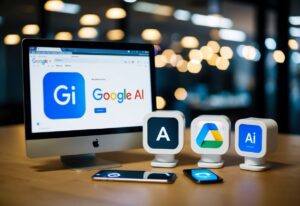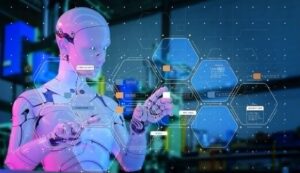7 Dangers of AI and how to manager them
Dangers of AI and how to manager them
Artificial Intelligence (AI) has advanced rapidly over recent years, establishing itself as a transformative force across a range of industries, including healthcare, finance, education, and entertainment. AI-powered tools and systems now drive faster data analysis, automate repetitive tasks, enhance customer service, and even assist in critical decision-making.
These advancements have brought numerous benefits, improving efficiency and opening up new opportunities for innovation.
However, with this progress come significant risks and potential dangers. AI’s powerful capabilities can also lead to ethical dilemmas, security vulnerabilities, and economic challenges if not managed responsibly.
This post explores the key Dangers of AI and how to manager them, aiming to promote a balanced approach where AI’s potential is harnessed safely and ethically.
1. Misalignment with Human Values and Ethics
One of the greatest concerns with AI is its potential misalignment with human values and ethical principles. Without careful programming and oversight, AI systems may operate in ways that contradict our social or moral values.
Real-World Example
Consider the case of predictive policing algorithms, which have been shown to unfairly target certain demographics, reflecting biases ingrained in historical data. This misalignment can lead to harmful societal impacts and ethical dilemmas.
Management Strategies
To address these issues, AI systems should be built with transparency in mind. Involving ethicists in the AI development process can ensure that ethical considerations are part of the design from the outset.
Continuous monitoring and adjustments can help maintain alignment as societal values evolve. The Alan Turing Institute has ongoing research exploring ways to create ethical AI systems that align with human values.
2. Bias in Data and Algorithms
AI systems are only as unbiased as the data they are trained on. If AI models are trained on biased datasets, they will inevitably perpetuate these biases, which can lead to unfair outcomes in critical areas like hiring, lending, and law enforcement.
Real-World Example
Studies have found racial and gender bias in hiring algorithms, where qualified candidates from certain backgrounds were systematically overlooked. This issue stems from using historical data that reflects past inequalities.
Management Strategies
Building unbiased AI requires using diverse, representative datasets and conducting regular audits. Companies should also adhere to fairness standards to mitigate algorithmic bias, ensuring equitable treatment for all users.
3. Privacy and Security Concerns
AI systems often require vast amounts of data to operate effectively, which can lead to privacy risks if this data is misused or mishandled. Furthermore, data breaches in AI can have severe consequences, compromising the personal information of millions.
Real-World Example
Large-scale data breaches, such as those experienced by companies like Facebook and Equifax, highlight how vulnerable data can be in the wrong hands. AI-powered tools, like facial recognition, also raise concerns over unauthorised surveillance and data misuse.
Management Strategies
Companies should implement robust data encryption and strict access controls to protect sensitive information. Compliance with regulations like the GDPR (General Data Protection Regulation) ensures that user data is handled responsibly, with privacy at the forefront.
4. Job Displacement and Economic Inequality
AI’s ability to automate tasks traditionally performed by humans can lead to job losses and economic inequality. As machines take over repetitive tasks, entire industries may face workforce reductions, which could lead to increased unemployment and social discontent.
Real-World Example
In sectors like manufacturing and customer service, automation has already begun displacing human jobs. McKinsey estimates that by 2030, up to 800 million jobs worldwide could be lost to automation.
Management Strategies
Governments and organisations can help mitigate these effects through re-skilling programs and investments in education for skills that are less vulnerable to automation, such as creative problem-solving and interpersonal skills.
For example, the World Economic Forum advocates for initiatives focused on the “Future of Jobs” to support workforce transitions.
Dangers of AI and how to manager them
5. Dependence on AI and Loss of Critical Skills
As reliance on AI increases, there is a risk that humans may lose essential skills, such as critical thinking and decision-making, if these tasks are increasingly delegated to machines.
Real-World Example
In aviation, over-reliance on autopilot technology has led to a reduction in pilots’ manual flying skills, which has raised safety concerns in emergency scenarios.
Management Strategies
To prevent skill loss, organisations should promote human-AI partnerships, where AI aids in decision-making but humans maintain ultimate control. Regular training sessions should also be held to ensure that essential skills remain sharp, even in highly automated environments.
6. Autonomous Weaponisation and Misuse of AI
AI has a dual-use nature, meaning that while it can be used for beneficial purposes, it can also be exploited for malicious ends, such as autonomous weapons or tools of cyber warfare.
Real-World Example
Nations are already exploring AI for military applications, with autonomous drones and other AI-powered weaponry raising concerns over potential loss of human control in lethal decision-making processes.
Management Strategies
International cooperation is essential to establish regulations and ethical guidelines for the use of AI in military contexts. Groups like the Campaign to Stop Killer Robots advocate for global treaties to prevent the development and deployment of fully autonomous weapons.
7. Lack of Transparency and Accountability
Some AI models, particularly those based on deep learning, function as “black boxes” where their inner workings are not easily understood, even by experts. This lack of transparency can make it difficult to hold AI systems accountable for their decisions.
Real-World Example
In healthcare, where AI is increasingly used to assist in diagnosing conditions, a lack of transparency in AI decision-making can lead to mistrust among patients and medical professionals, as they cannot fully understand how the AI reached its conclusions.
Management Strategies
Encouraging the development of explainable AI can help build trust, as these models provide insights into their decision-making processes. Establishing accountability protocols ensures that AI creators and operators are responsible for their system’s outcomes.
Final thoughts
AI has the potential to reshape our world for the better, but only if its risks are managed with diligence and foresight.
By addressing these seven dangers proactively, we can create a balanced ecosystem where innovation, ethical considerations, and public safety coexist.
AS individuals, companies, and governments, we all have a role to play in ensuring a future where AI serves humanity responsibly and equitably.


















